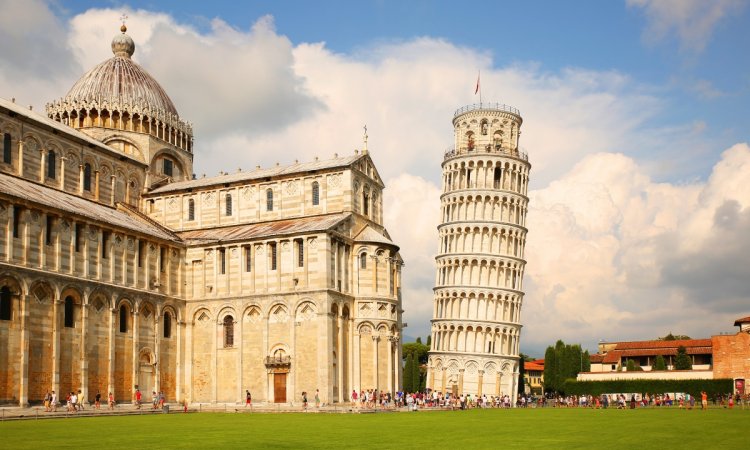
When is the best time to visit to Italy? Whenever you can, of course. There’s no bad time to take a trip to Italy. Train will always be running, including the popular Naples to Rome route, the colosseum will still be the colosseum and the wild beauty of the Amalfi Coast will still be wild and beautiful whether the sun is shining bright or not.
But if you’re one of the lucky ones whose work and family schedule allow you the flexibility to travel whenever you want, there are some distinct advantages to planning a trip to Italy during the shoulder season. Read this guide and learn the best time to visit Italy.
When is shoulder season?
The peak or high season, popular with tourists taking the train from Rome to Pisa to get a picture with The Leaning Tower is typically July to August. Increasingly though, peak season prices tend to stretch from May to the end of September.
Low season or the off-peak season (unless, of course, you’re in the mountains and near a winter sports resort) is roughly between mid-November to mid-March.
The in-between parts of the year are the seasons we know as fall and spring: in other words, the shoulder seasons. These roughly fall between mid-March to April (except for Easter) and October to November.
There are some distinct benefits to planning your Italy travel during these months. Here we explain why shoulder season is the best time to visit Italy.
The weather is still mild
Though the temperature has cooled off significantly during these months, it is still temperate and perfect for sightseeing. For instance, Rome’s temperature in October is on average between 53-74 oF, or 12-23 oC, making this month the best time to visit. In more southern climes, the weather is still warm enough to enjoy the beaches during this time of the year. But you won’t have to resort to fisticuffs for a patch of sand.
It’s less expensive
Peak season also means peak prices. If you can travel in the heart of the shoulder seasons, chances are you can score cheaper flights as well as cheaper hotel prices, making it, fiscally speaking, the best time to go to Italy.
It’s less crowded
Though the crowds at the Vatican are ubiquitous, they thin out a bit during the shoulder season. Here a few Italy travel tips for escaping the seasonal crowds in different regions in Italy:
- Tuscany: visit in the spring after Easter but before the high season. Check out the unexpected green lusciousness of the valley, tour the wineries and enjoy a quiet walk through the gorgeous Tuscan Hills.
- South of Italy: visit as early as April and as late as October. You’ll still get warmer temperatures but without the crowds.
- Venice: Visit during October and November; the tourists have all but cleared out and you can truly get a feel for the magic of the place. However, be warned: the temperatures are quite a bit cooler than the summer months so pack some layers.
Keep in mind that the tourist seasons do not stick strictly to their weather counterparts. Many religious festivals, events and carnivals take place during the shoulder and low seasons, which means you’ll still have to pay full price. For instance, unless you’re Catholic and going to Italy to see the pope, it might be best to stay away from Rome during Easter celebrations. And if you have a dislike of crowds, I recommend you avoid Venice during Carnival, which takes place in late winter.
Either way, Italy is Italy. You’ll have a good time whenever you decide to go. Buon viaggio!
What are you waiting for? Book your tickets now!


